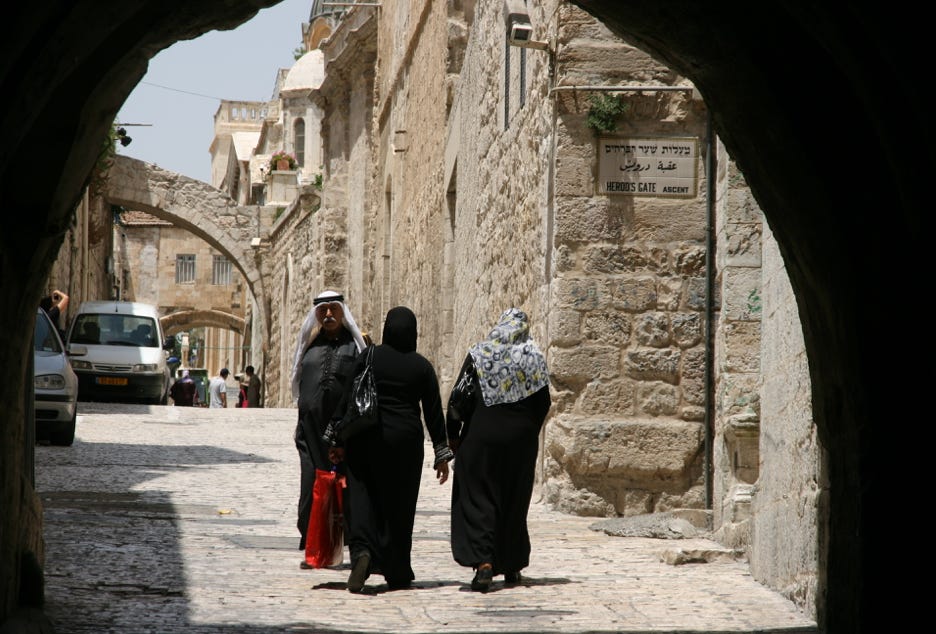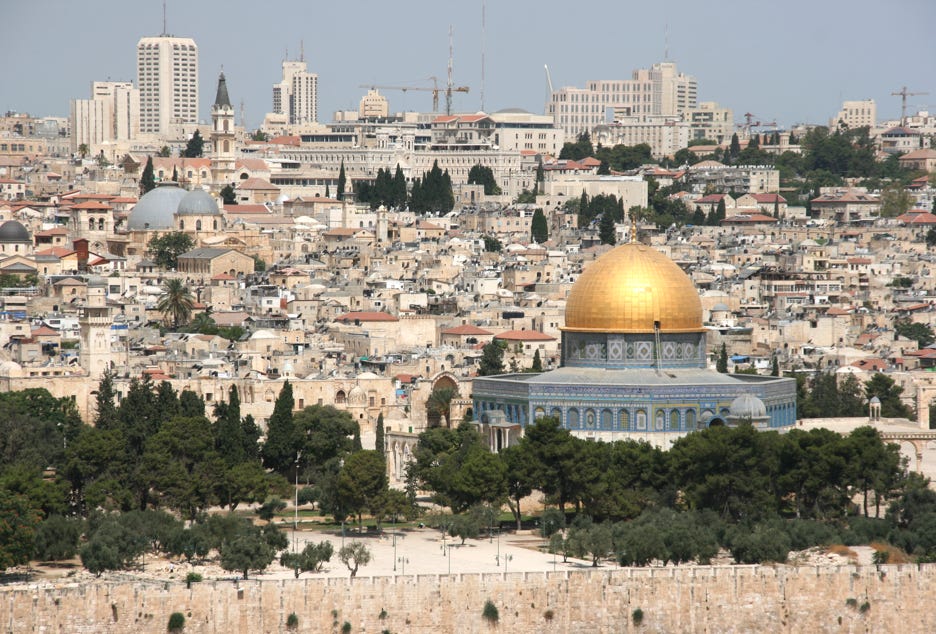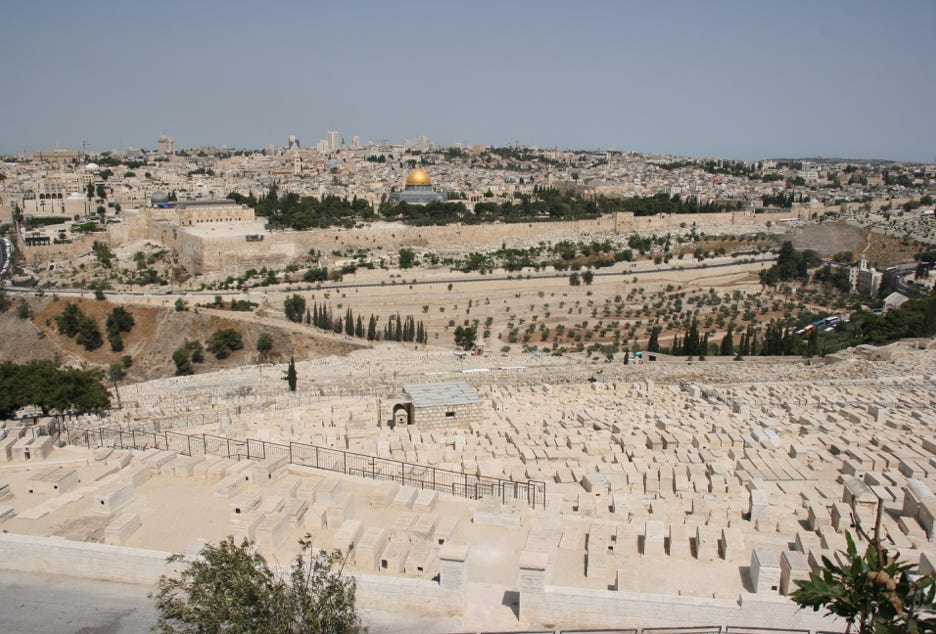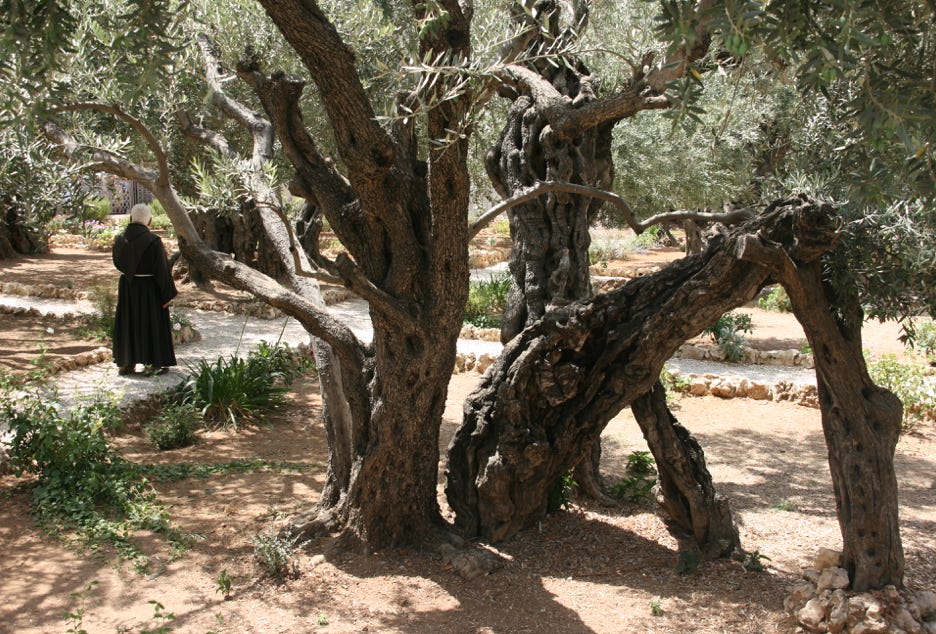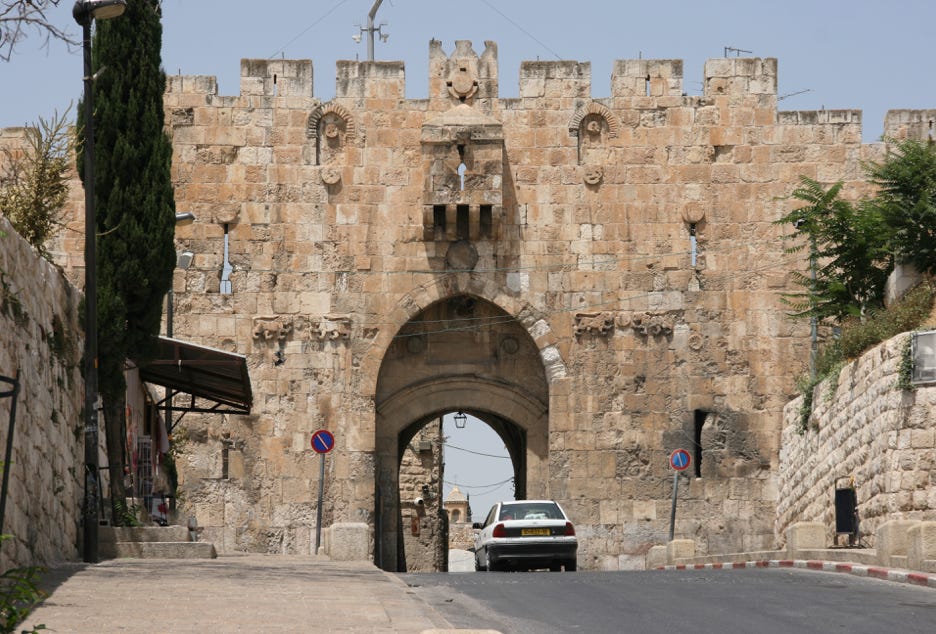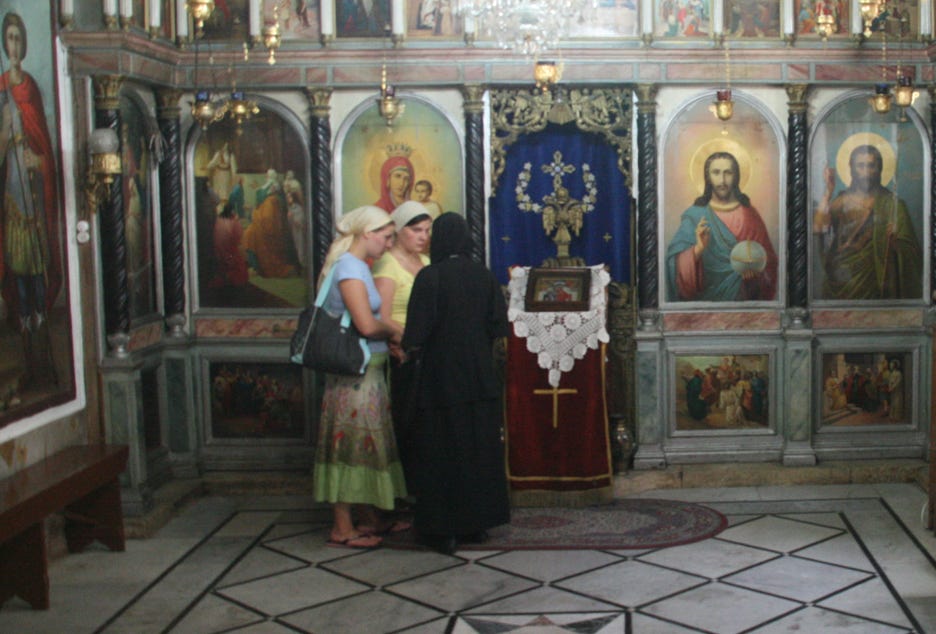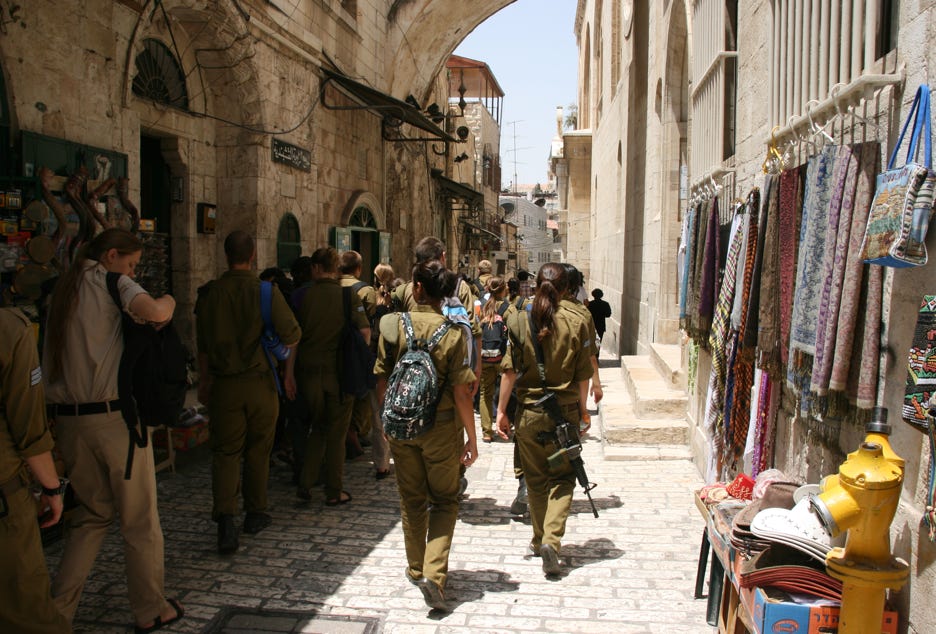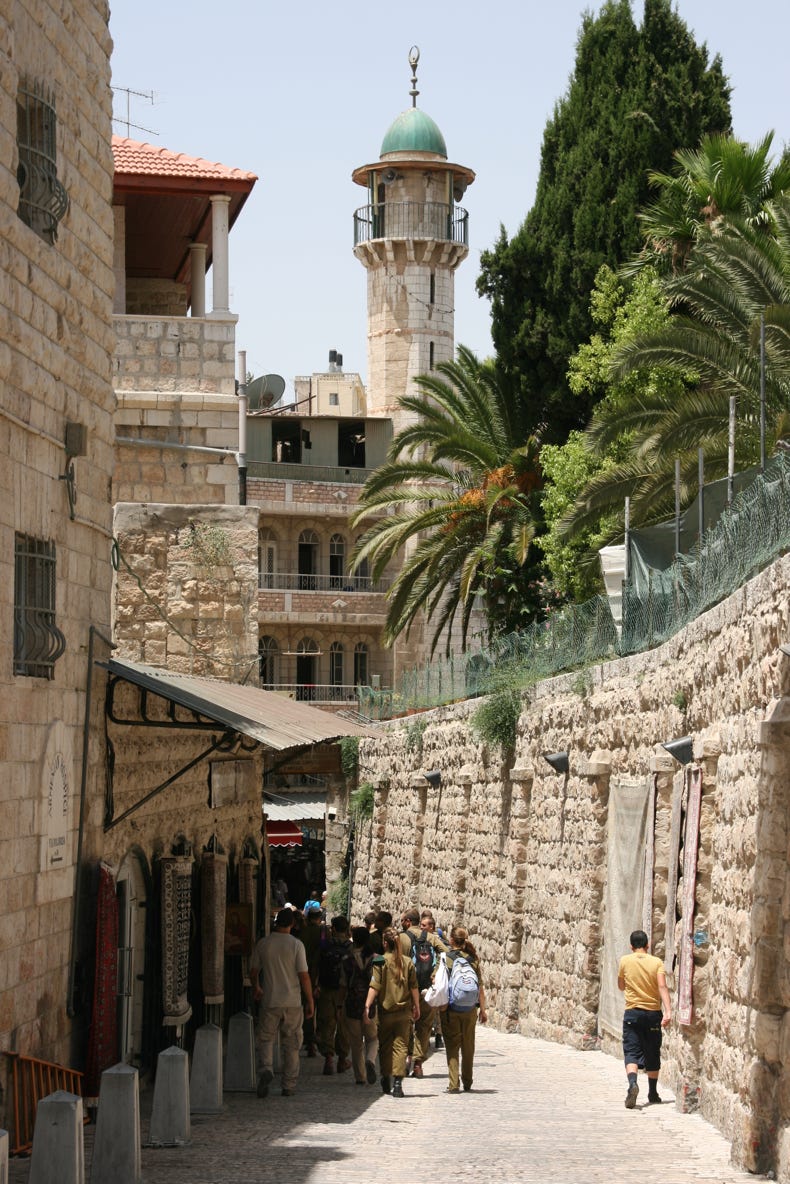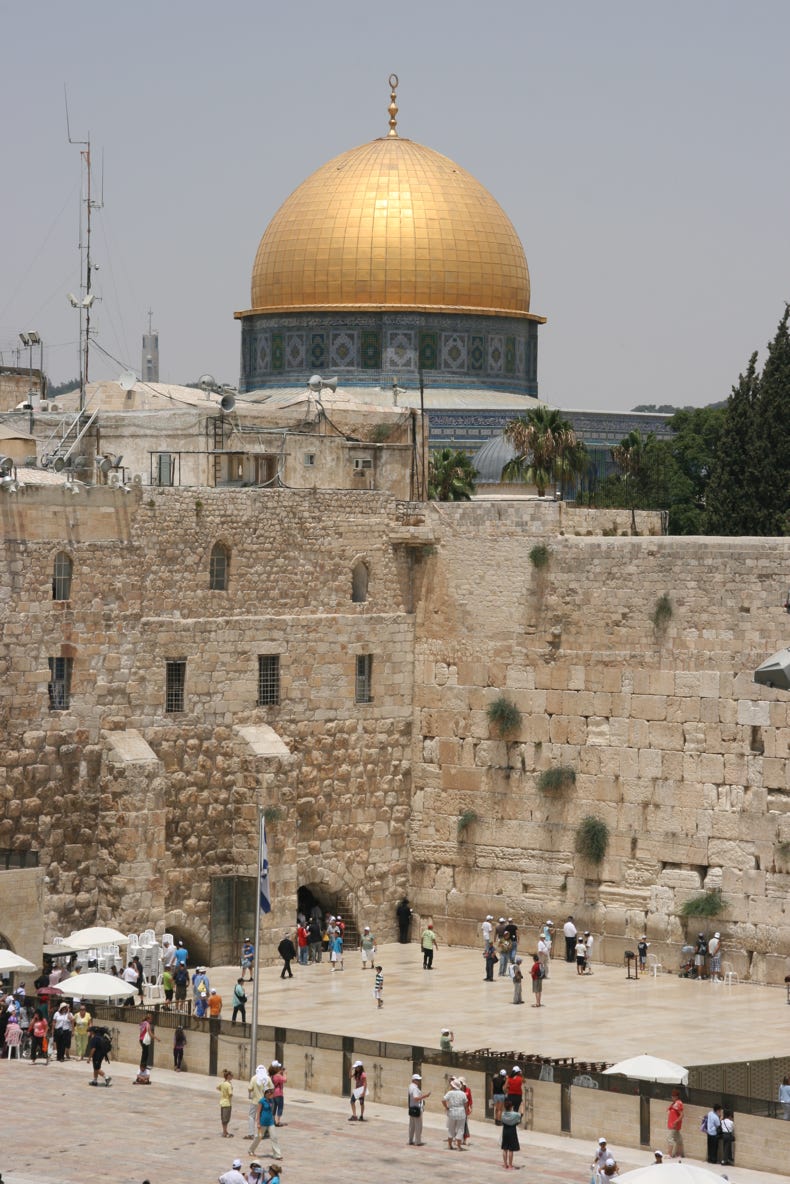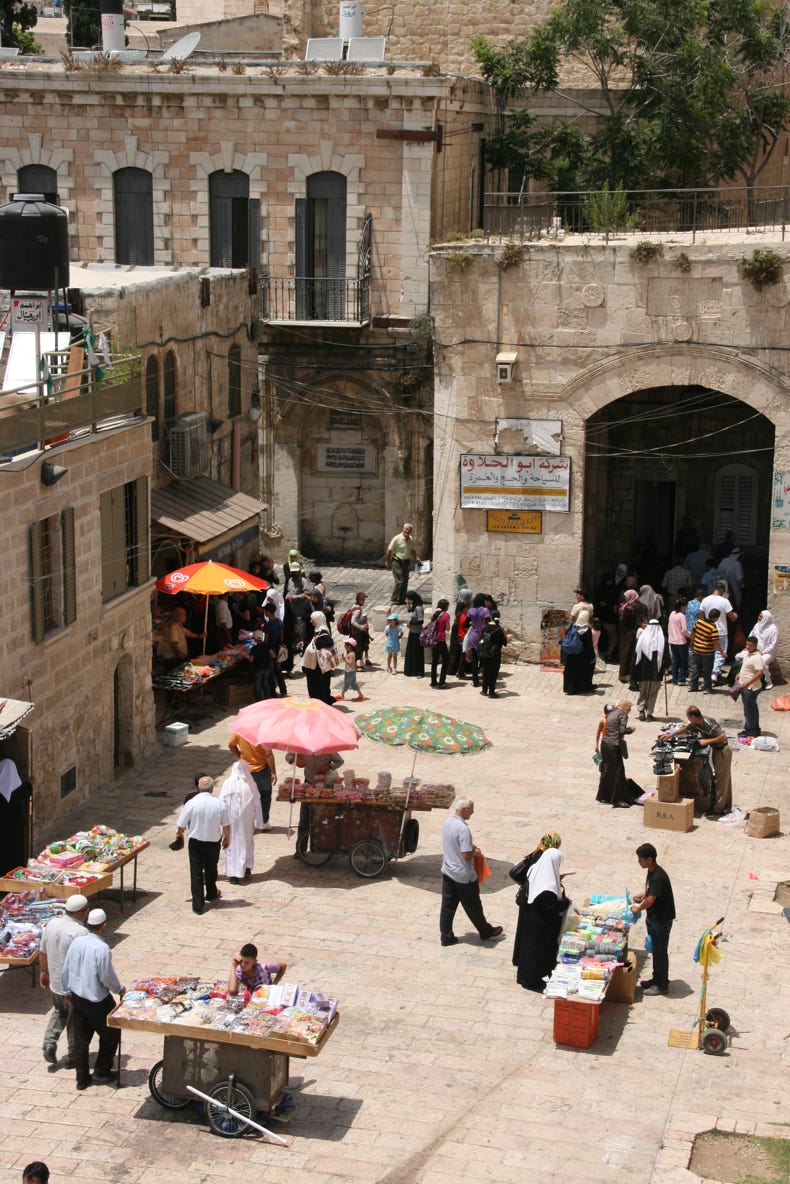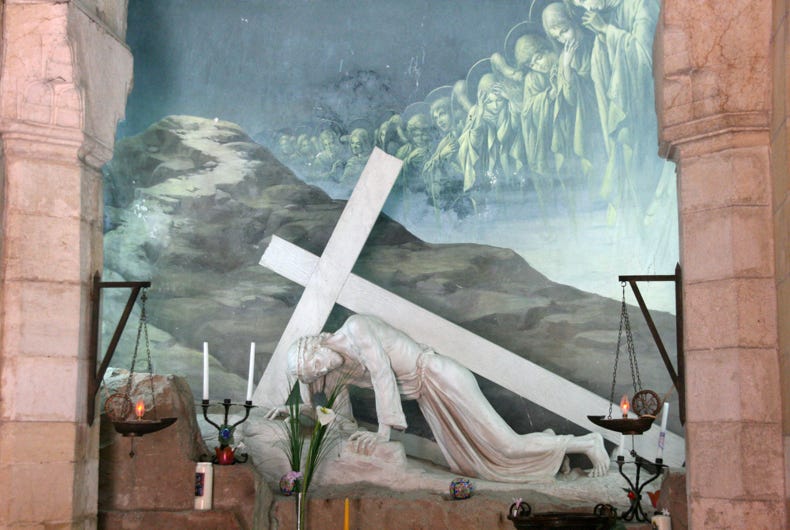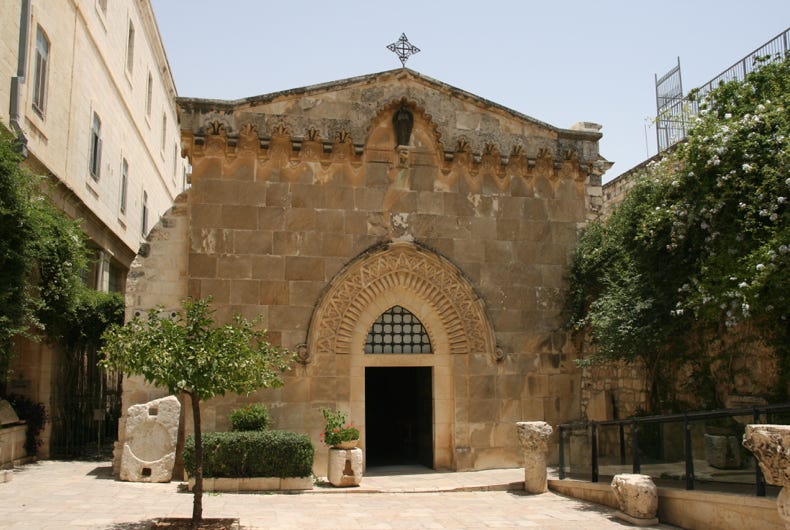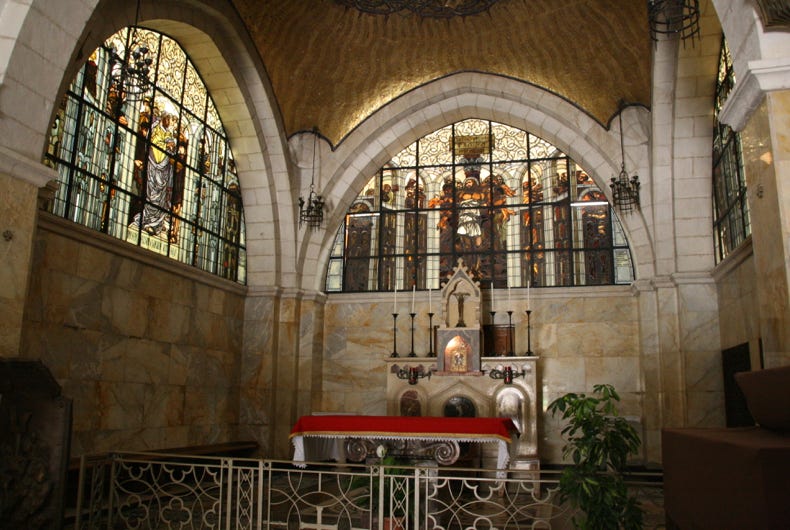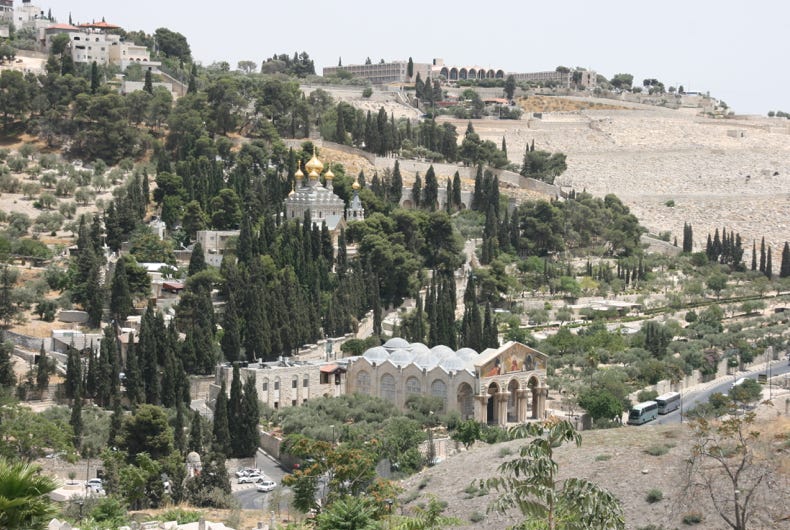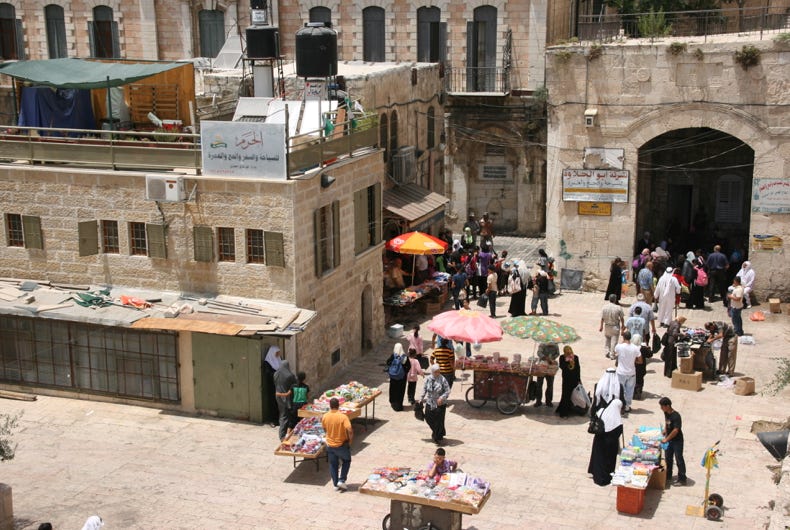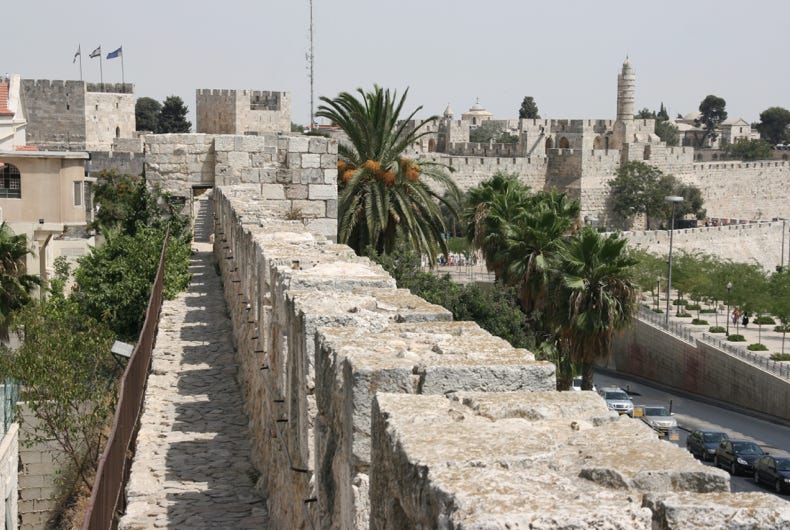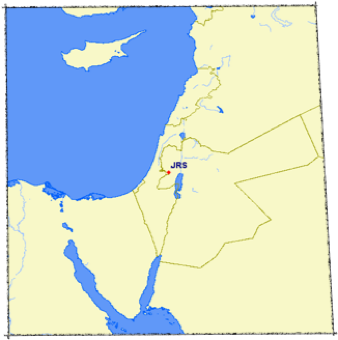


It has been wonderful to have the time to explore Jerusalem’s Old City today. As Di had not slept well last night, we had a fairly leisurely start, leaving our hotel at about 9:30 am and heading to the Mount of Olives, which overlooks the Old City of Jerusalem from the east. I can remember as a boy learning that both the Mount of Olives and Jerusalem’s Old City were “off limits’ areas to Westerners as both were part of Jordan. After the Six-Day War of 1967, Israel gained control of eastern Jerusalem and re-united the City, and also gained control of the Mount of Olives (as well as areas further east). As if to emphasise the reality of Israeli control, the Israeli flags flying over the Mount of Olives seemed especially large.
The Mount of Olives provides superb views across the Kidron Valley to the Old City of Jerusalem, and it was great to take in the the classic panorama of Old Jerusalem in the still-golden morning light (the view I used as a page header throughout this trip diary). In addition to featuring prominently in the biblical narrative, the Mount of Olives is the place where Jews believe the resurrection of the dead will begin in the end-times, and for that reason, the western slope facing Jerusalem is extremely popular as a place to be buried. I understand that the grave sites on the Mount of Olives are among the most expensive in the world, but there are many thousands of graves there nonetheless.
We descended the surprisingly steep slopes of the Mount of Olives, through the expansive cemeteries of various eras, and came across the Church of Dominus Flevit. Run by the Franciscans, this church was built on the spot where Jesus looked over the city of Jerusalem and wept for the future of its people, inspiring the Bible’s shortest verse, “Jesus wept” (John 11:35).
A further descent to the foot of the slope brought us to the Garden of Gethsemane, the place where Jesus went to pray immediately before his arrest and crucifixion. This small garden of olive trees, also supervised by the Franciscans, has of course been landscaped since Jesus’ day, but some of the olive trees were extremely old, and if not quite 2000 years old, several had been dated at at least 1500 years old, meaning they would have grown from seeds or roots that were present in Jesus’ day. A large chapel beside the garden (also run by the Franciscans) was holding a very moving mass as we visited.
The proximity of the Mount of Olives to Jerusalem, and the closeness of the Garden of Gethsemane surprised me a little, as did the proximity of Calvary (Golgotha) that we had visited yesterday. I had imagined these places as being a little more widespread than they were, but each of the places of immense significance to the crucifixion story were within minutes walk of each other.
The Garden of Gethsemane was almost at the foot of the Mount of Olives in the Kidron Valley, so immediately upon leaving the garden we began an ascent to the city walls of Old Jerusalem, entering through the Lion’s Gate. This entrance was significant because it led directly into a street known as the Via Dolorosa, which was the start of the route followed by Jesus to the cross.
Immediately inside the gate was a building that claimed to the birthplace of Mary, the mother of Jesus. I was unable to ascertain the basis of thinking that Mary had been born at that place, however.
More interesting in my view were the ‘real, original’ stations of the cross, the 14 points where the events of Jesus’ final journey to the cross occurred. Each of these points was marked by something, whether a small shrine or on other occasions, a large church. We had seen the last stations of the cross inside the Church of the Holy Sepulchre yesterday. The Via Dolorosa, on the other hand, contained the first three stations.
We didn’t complete the whole trek through all the stations of the cross, but headed back instead to Lion’s Gate, near where we ascended the city walls. It is not possible to walk the complete circuit of the city walls for security reasons, but we completed the circuit anti-clockwise from Lion’s Gate to the crusader tower at Jaffa Gate.
Because we were starting on the eastern side of the Old City, we began with some splendid views across to the Mount of Olives. We had wonderful views of the large chapel in the Kidron Valley with three arches that marked the Garden of Gethsemane, which could be clearly seen as a small grove of olive trees immediately beside it. The terrace immediately to the right of the multi- domed Russian Orthodox church up the hill marked the place where “Jesus wept”. The vast scale of the Jewish cemeteries could also be seen in the background, covering the entire slope from bottom to top.
The furthest south we could walk along the eastern wall was Lion’s Gate, which gave us lovely views of a thriving marketplace in the city below us, a scene that would have changed in detail only over the past couple of thousand years.
Although the weather was hot (maximum of 35°C), and the tops of the walls were quite exposed, we continued our walk along the uneven surfaces of the ramparts, up and down stairs that reflected the somewhat rugged topography below us. We were rewarded with wonderful views across the Old City, and also of the new city on the outside of the walls. At a little before 3:30 pm we reached the end of the planned walk, which was Jaffa Gate.
By this time, Di was looking extremely hot and tired from the arduous walk in the hot sun, so we decided to return to our hotel and have a rest during the heat of the day. That was a good idea, and the bright red colour of her face soon subsided as she lay down and slept on and off for the next few hours.
Our plan for tomorrow is to rise fairly early and see some of the Israeli countryside to the north of Jerusalem.

